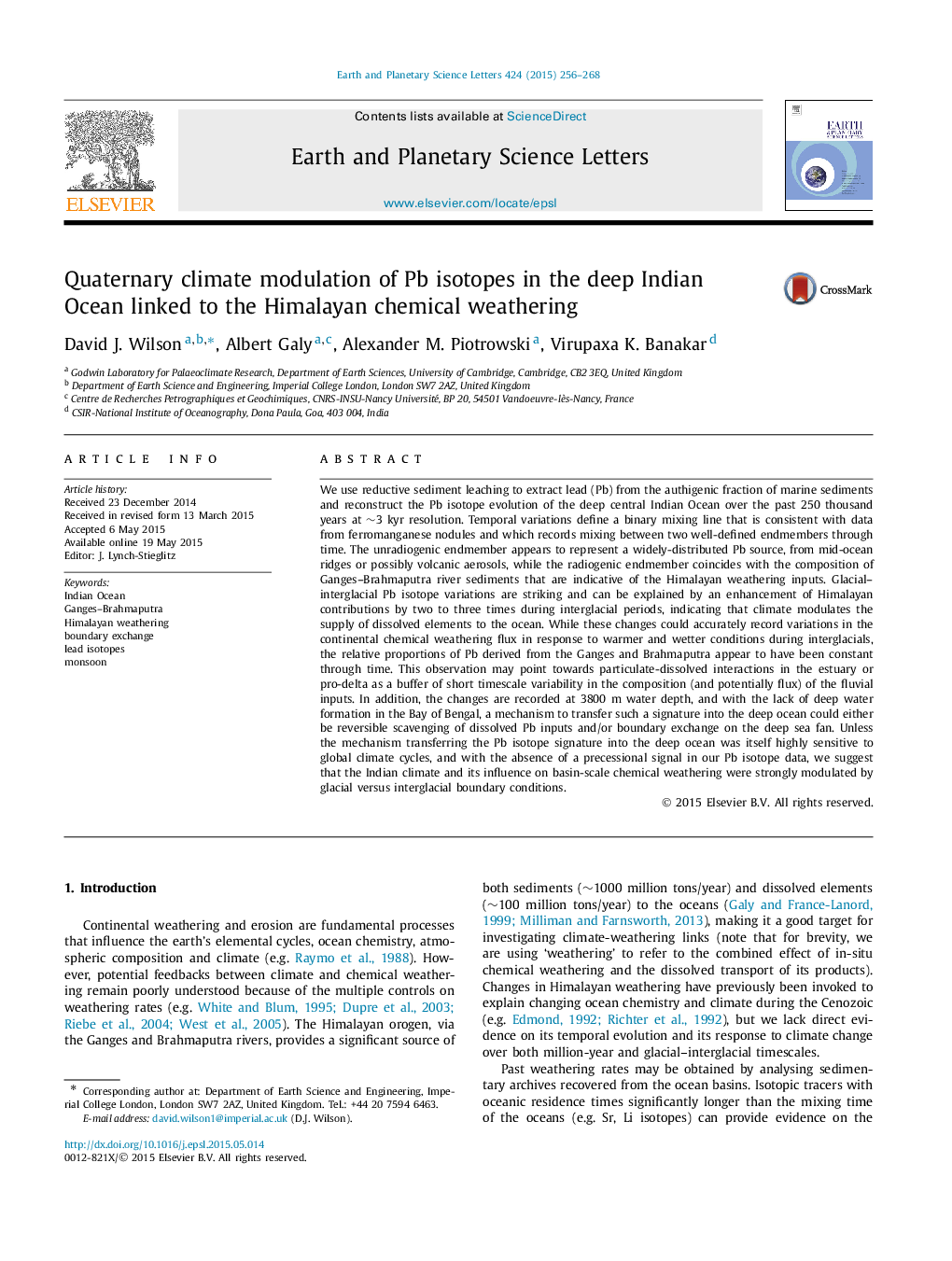| Article ID | Journal | Published Year | Pages | File Type |
|---|---|---|---|---|
| 6428248 | Earth and Planetary Science Letters | 2015 | 13 Pages |
â¢We reconstruct the Pb isotope evolution of the deep Indian Ocean 0-250 ka BP.â¢Control by binary mixing between volcanic and Ganges-Brahmaputra endmembers.â¢Reversible scavenging or boundary exchange transfer riverine Pb into deep ocean.â¢Quaternary climatic variations modulate dissolved element supply to the oceans.â¢Himalayan weathering flux enhanced by approximately 2-3 times during interglacials.
We use reductive sediment leaching to extract lead (Pb) from the authigenic fraction of marine sediments and reconstruct the Pb isotope evolution of the deep central Indian Ocean over the past 250 thousand years at â¼3 kyr resolution. Temporal variations define a binary mixing line that is consistent with data from ferromanganese nodules and which records mixing between two well-defined endmembers through time. The unradiogenic endmember appears to represent a widely-distributed Pb source, from mid-ocean ridges or possibly volcanic aerosols, while the radiogenic endmember coincides with the composition of Ganges-Brahmaputra river sediments that are indicative of the Himalayan weathering inputs. Glacial-interglacial Pb isotope variations are striking and can be explained by an enhancement of Himalayan contributions by two to three times during interglacial periods, indicating that climate modulates the supply of dissolved elements to the ocean. While these changes could accurately record variations in the continental chemical weathering flux in response to warmer and wetter conditions during interglacials, the relative proportions of Pb derived from the Ganges and Brahmaputra appear to have been constant through time. This observation may point towards particulate-dissolved interactions in the estuary or pro-delta as a buffer of short timescale variability in the composition (and potentially flux) of the fluvial inputs. In addition, the changes are recorded at 3800 m water depth, and with the lack of deep water formation in the Bay of Bengal, a mechanism to transfer such a signature into the deep ocean could either be reversible scavenging of dissolved Pb inputs and/or boundary exchange on the deep sea fan. Unless the mechanism transferring the Pb isotope signature into the deep ocean was itself highly sensitive to global climate cycles, and with the absence of a precessional signal in our Pb isotope data, we suggest that the Indian climate and its influence on basin-scale chemical weathering were strongly modulated by glacial versus interglacial boundary conditions.
